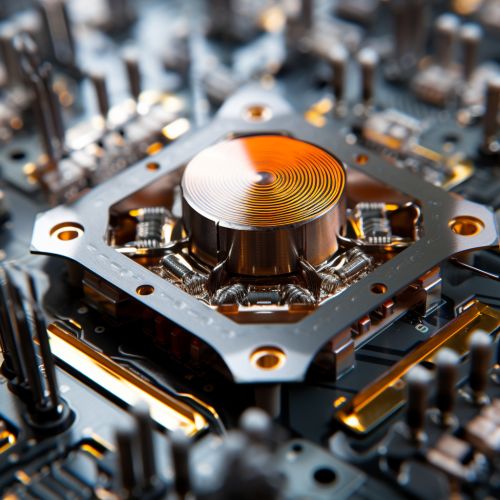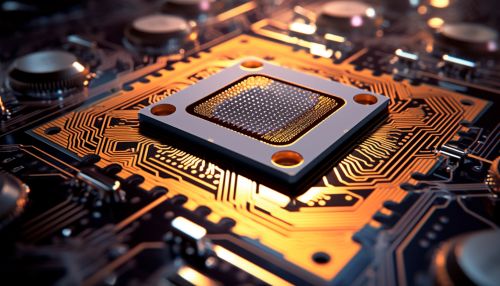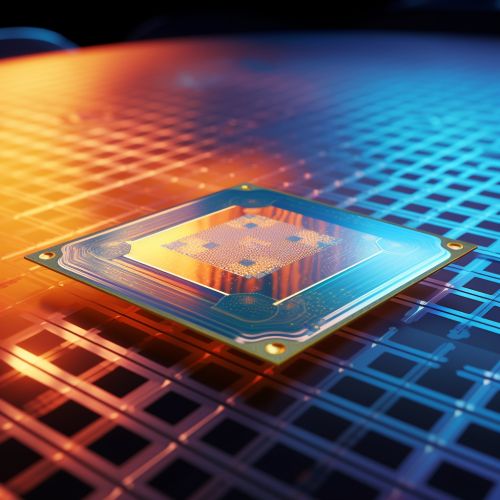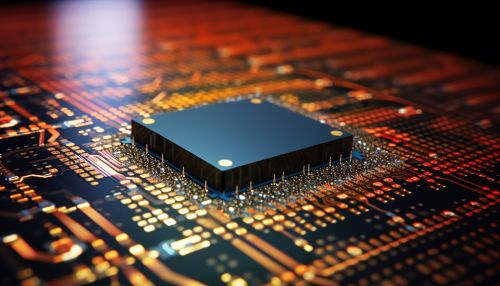The Physics of Quantum Mechanics in Semiconductor Devices
Introduction
Quantum mechanics, a fundamental theory in physics, describes physical phenomena at the nanoscopic scales, where the action is on the order of the Planck constant. It departs from classical mechanics primarily at the quantum realm of atomic and subatomic length scales. Quantum mechanics provides a mathematical description of much of the dual particle-like and wave-like behavior and interactions of energy and matter. This article will delve into the application of quantum mechanics in the field of semiconductor devices, exploring the principles and theories that govern their operation.


Quantum Mechanics and Semiconductors
Semiconductors are materials with an electrical conductivity value falling between that of a conductor, such as metallic copper, and an insulator, such as glass. Their resistance decreases as their temperature increases, which is behavior opposite to that of a metal. Their conducting properties may be altered in useful ways by the deliberate, controlled introduction of impurities into the crystal structure, which lowers its resistance but also permits the creation of semiconductor junctions between differently-doped regions of the extrinsic semiconductor crystal. The behavior of charge carriers, which include electrons, ions and electron holes, at these junctions is the basis of diodes, transistors and most modern electronics.


The principles of quantum mechanics are essential to understanding the behavior of particles at the atomic and subatomic levels. The quantum mechanical model of the atom considers the particle nature of light, where a stream of light is composed of tiny packets of energy called photons. In semiconductors, the energy of these photons is harnessed to excite electrons from the valence band to the conduction band, creating an electron-hole pair that can conduct electricity.
Quantum Tunneling in Semiconductors
One of the most significant quantum mechanical effects in semiconductors is quantum tunneling. Quantum tunneling is the quantum mechanical phenomenon where a subatomic particle passes through a potential barrier that it could not surmount under the provision of classical mechanics. This effect is a direct result of the wave-like properties of particles, as described by the Schrodinger equation.


In semiconductor devices, quantum tunneling allows electrons to tunnel through a barrier instead of going over it. This phenomenon is utilized in many semiconductor devices, including tunnel diodes and resonant tunneling diodes. These devices take advantage of the fact that if the barrier is thin enough, electrons can tunnel through with high probability, leading to a current flow even when there is no voltage applied.
Quantum Confinement in Semiconductors
Quantum confinement is another quantum mechanical effect that plays a significant role in semiconductors. When particles are confined to a space on the order of their de Broglie wavelength, their properties begin to change. This is due to the fact that the wave function of the particle, which describes its state, cannot be zero in the confinement region. This leads to quantization of energy levels, similar to what is seen in atoms.


In semiconductors, quantum confinement can be observed in quantum dots, quantum wires, and quantum wells. These structures have dimensions on the order of the de Broglie wavelength of the charge carriers, leading to quantized energy levels. This quantization leads to a variety of interesting and useful properties, such as size-dependent optical properties in quantum dots.
Quantum Computing and Semiconductors
Quantum computing, a field that applies the principles of quantum mechanics to process information, has also found applications in semiconductors. Quantum bits, or qubits, the basic unit of quantum information, can be implemented using semiconductor devices. For instance, the spin of an electron in a quantum dot or the state of a superconducting circuit can be used as a qubit.


Quantum computers have the potential to solve certain problems much more quickly than classical computers. However, building a practical quantum computer is a significant technological challenge, due to the need for maintaining quantum coherence of the qubits. Semiconductors, with their well-understood properties and mature fabrication techniques, provide a promising platform for realizing quantum computers.
Conclusion
The principles of quantum mechanics play a crucial role in the operation and design of semiconductor devices. From quantum tunneling to quantum confinement, these quantum effects are harnessed to create devices with unique and useful properties. As our understanding of quantum mechanics continues to deepen, we can expect to see even more exciting applications in semiconductors, from more efficient solar cells to powerful quantum computers.
